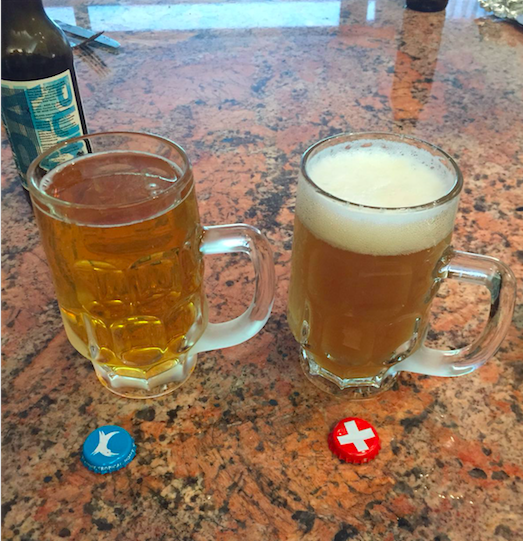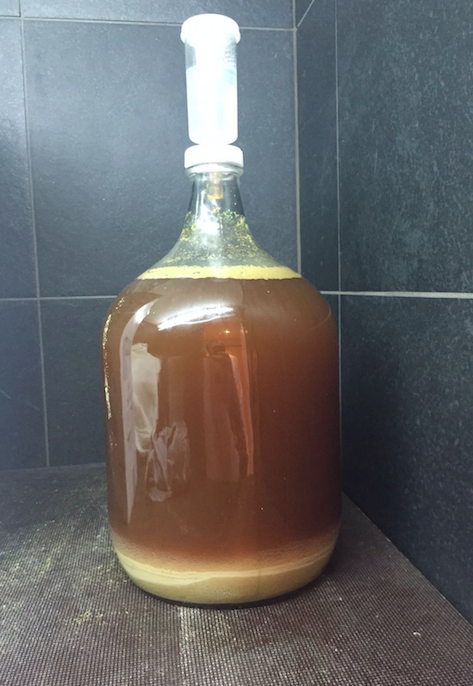seabirdthecat
New Member
- Joined
- Aug 25, 2016
- Messages
- 3
- Reaction score
- 1
Did my first brew a few weeks ago - Punk IPA kit from the brooklyn brewshop. I wanted to have something to compare it to, to know if i had done it "right!"
I struggled filtering out the hops after boiling the wort, so eventually it all went into the carboy for fermentation. [image - First Brew - Fermenter]. As you can see the amount of sediment is a little extreme. After 2 weeks I bottled using honey as a priming sugar.
Despite this, the beer turned out fairly close in flavour to the Punk IPA (swiss flag cap is the home-brew), although much cloudier, with a LOT of carbonation, and a somewhat metallic aftertaste [image First Brew - Results]
So, on the second batch, with a (sanitised) strainer we managed to extract the hops after boiling the wort, resulting in a much cleaner looking beer in the fermenter. [image - Second Brew - Fermenter I]
Now, 2 weeks after fermentation started, as I get ready to bottle this second batch the colour has changed significantly [image - Second Brew - Fermenter II]
I am hoping that this change in colour is as a result of the sediment coming out of suspension. On the true at the bottom there is a clear white line of yeast, and then a cloudy/not quite settled layer of what looks like very fine particles.
If anybody has any thought/experience, I would be pleased to hear them!




I struggled filtering out the hops after boiling the wort, so eventually it all went into the carboy for fermentation. [image - First Brew - Fermenter]. As you can see the amount of sediment is a little extreme. After 2 weeks I bottled using honey as a priming sugar.
Despite this, the beer turned out fairly close in flavour to the Punk IPA (swiss flag cap is the home-brew), although much cloudier, with a LOT of carbonation, and a somewhat metallic aftertaste [image First Brew - Results]
So, on the second batch, with a (sanitised) strainer we managed to extract the hops after boiling the wort, resulting in a much cleaner looking beer in the fermenter. [image - Second Brew - Fermenter I]
Now, 2 weeks after fermentation started, as I get ready to bottle this second batch the colour has changed significantly [image - Second Brew - Fermenter II]
I am hoping that this change in colour is as a result of the sediment coming out of suspension. On the true at the bottom there is a clear white line of yeast, and then a cloudy/not quite settled layer of what looks like very fine particles.
If anybody has any thought/experience, I would be pleased to hear them!






